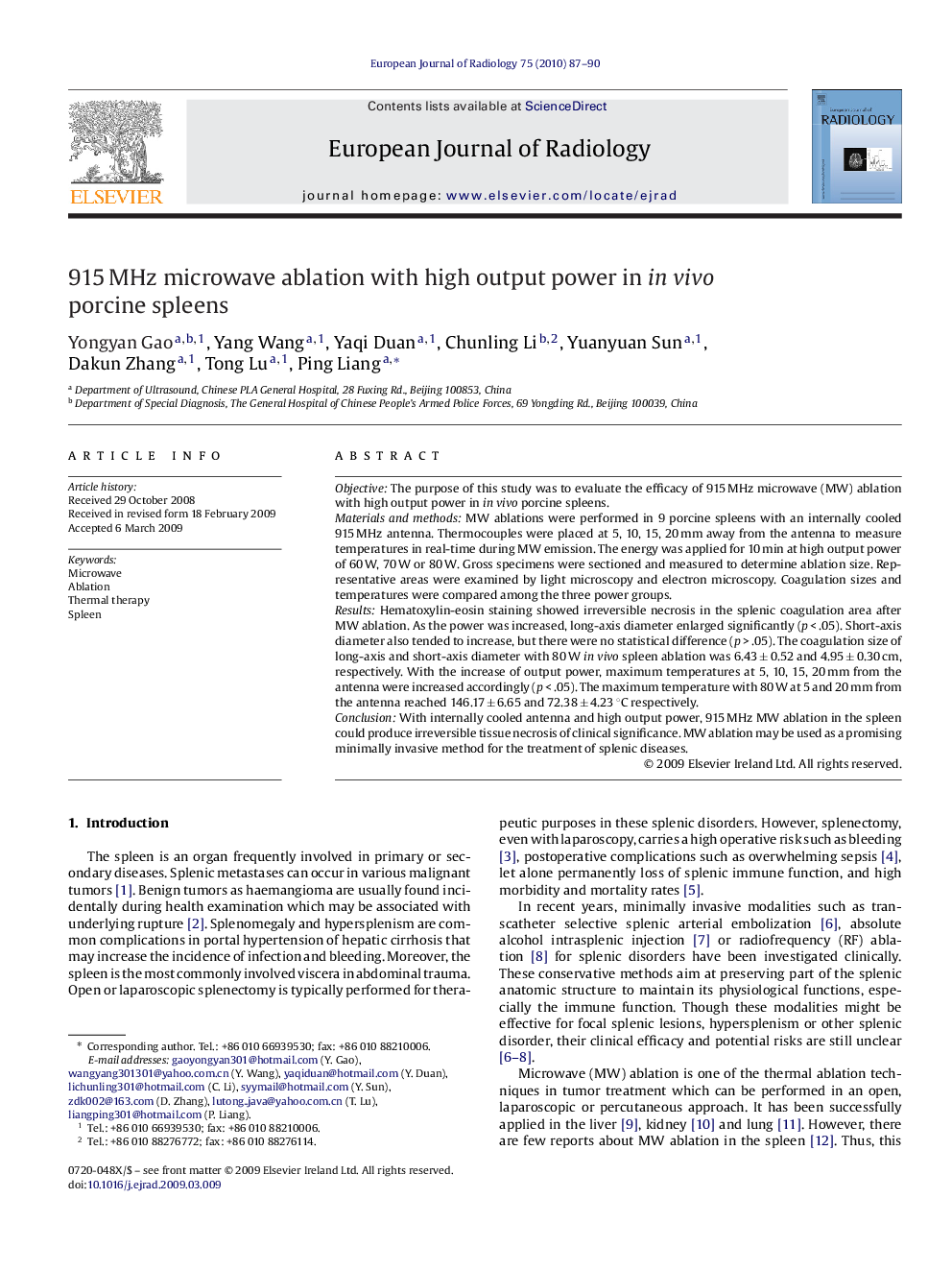| Article ID | Journal | Published Year | Pages | File Type |
|---|---|---|---|---|
| 4227146 | European Journal of Radiology | 2010 | 4 Pages |
ObjectiveThe purpose of this study was to evaluate the efficacy of 915 MHz microwave (MW) ablation with high output power in in vivo porcine spleens.Materials and methodsMW ablations were performed in 9 porcine spleens with an internally cooled 915 MHz antenna. Thermocouples were placed at 5, 10, 15, 20 mm away from the antenna to measure temperatures in real-time during MW emission. The energy was applied for 10 min at high output power of 60 W, 70 W or 80 W. Gross specimens were sectioned and measured to determine ablation size. Representative areas were examined by light microscopy and electron microscopy. Coagulation sizes and temperatures were compared among the three power groups.ResultsHematoxylin-eosin staining showed irreversible necrosis in the splenic coagulation area after MW ablation. As the power was increased, long-axis diameter enlarged significantly (p < .05). Short-axis diameter also tended to increase, but there were no statistical difference (p > .05). The coagulation size of long-axis and short-axis diameter with 80 W in vivo spleen ablation was 6.43 ± 0.52 and 4.95 ± 0.30 cm, respectively. With the increase of output power, maximum temperatures at 5, 10, 15, 20 mm from the antenna were increased accordingly (p < .05). The maximum temperature with 80 W at 5 and 20 mm from the antenna reached 146.17 ± 6.65 and 72.38 ± 4.23 °C respectively.ConclusionWith internally cooled antenna and high output power, 915 MHz MW ablation in the spleen could produce irreversible tissue necrosis of clinical significance. MW ablation may be used as a promising minimally invasive method for the treatment of splenic diseases.
